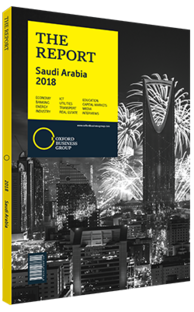Development of Al Faisaliah to ease pressure on Makkah and Jeddah
With Saudi Arabia aiming to significantly increase the number of pilgrims visiting Makkah and Medina each year, the issue of providing sufficient housing for the cities’ permanent residents has been a cause for growing concern. To take pressure off both Makkah and Jeddah – cities that have seen substantial population increases over the past decade – the government in 2017 unveiled plans to build Al Faisaliah, a mega-city located on the Red Sea coast that will provide 995,000 housing units and accommodate 6.5m people by 2050.
According to Prince Khalid bin Faisal Al Saud, the governor of Makkah, the project, which will be supervised by the Makkah Region Development Authority (MRDA), is “a giant extension of the holy city of Makkah rather than a new city”. Covering an area of 2450 sq km, the geographical border of the city will begin from Makkah’s Haram boundary from where it will extend to Al Shuaiba on the Red Sea coast, effectively linking the holy city to the sea. Along with residential units, the city will comprise commercial and retail centres, and health and educational services. The city will also have modern transportation links, including its own private airport and a seaport.
Regional Stimulus
While the MRDA will supervise the project, Prince Khalid has said that meetings with both Islamic and global companies within the private sector would begin immediately, in the hope that private partners would actively participate and contribute to the project. Al Faisaliah has the potential to generate significant investment opportunities in the wider Makkah region, while also contributing to Vision 2030 goals to increase the private sector’s GDP contribution to 65% by 2030, up from 40% currently.
The development – which is expected to provide up to 1m jobs across various sectors, including health, education, technology and services – will also support the Kingdom’s effort to reduce domestic consumption of oil and gas, with the MRDA targeting power production of 9.5 GW from renewable energy sources. It is hoped that the city will attract millions of visitors each year, including Hajj and Umrah pilgrims.
Beyond Oil
The Al Faisaliah city development falls in with past government strategies that have sought to foster economic activity outside the dominant energy sector by building vast economic cities in the desert. King Abdullah Economic City, located to the north of Jeddah, is currently the largest example of this development approach. The city, which has attracted $7.9bn of investment, includes a deep-sea port and associated logistics facilities as well as more than 6500 residential properties. Meanwhile, further north, Medina’s Knowledge Economic City is the Kingdom’s first so-called smart city development, and according to the Economic Cities Authority website, it will target research and development in key investment sectors, including education, tourism, ICT and health care, when complete.
However, while many such developments have been initiated in Saudi Arabia in recent times, few have yet to reach completion. Indeed, in Vision 2030 the government has acknowledged as much, declaring that many of the economic city projects unveiled over the last decade have not realised their full potential. In response to this, the National Transformation Programme 2020, the near-term component of Vision 2030, has stated the government’s intention to “salvage” and “revamp” several of these cities by working with private companies that can “contribute in the development of the economy and attract quality investments”.
To that end, the launch of the Al Faisailiah project indicates a fresh impetus behind this form of development strategy, with the Public Investment Fund – a key driver behind many projects associated with Vision 2030 – taking on an active role.
As oil prices continue to rally, and state-led construction starts to pick up once again, the authorities will be keen to maintain the renewed momentum that is gathering behind the Kingdom’s economic city developments to enable them to reach their full potential.
You have reached the limit of premium articles you can view for free.
Choose from the options below to purchase print or digital editions of our Reports. You can also purchase a website subscription giving you unlimited access to all of our Reports online for 12 months.
If you have already purchased this Report or have a website subscription, please login to continue.

